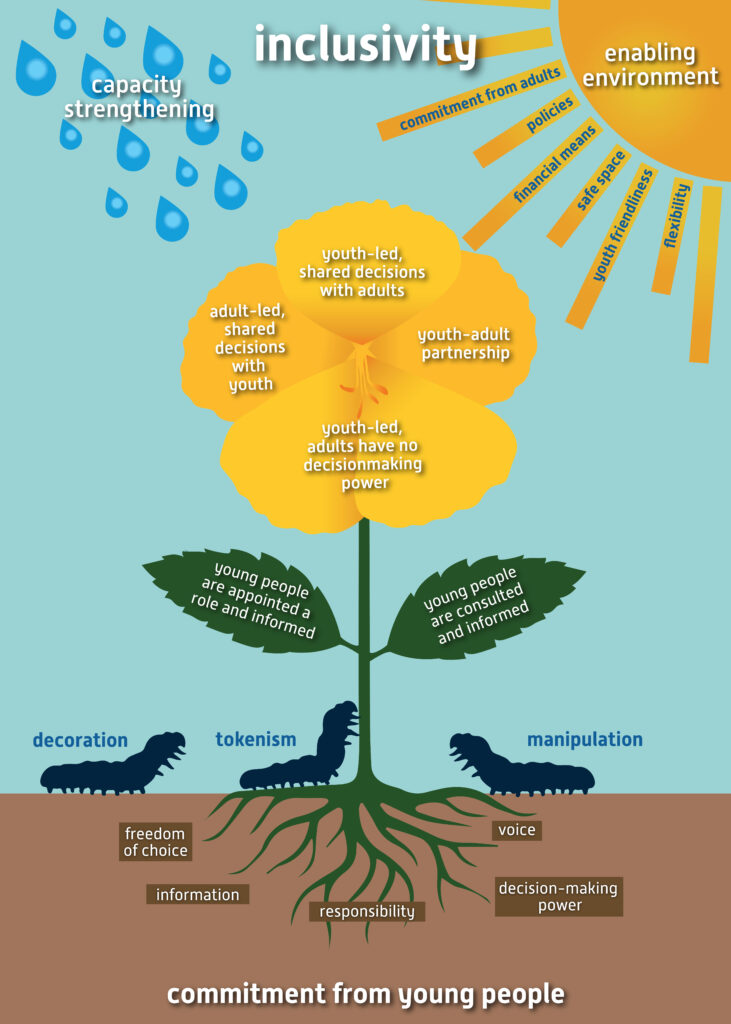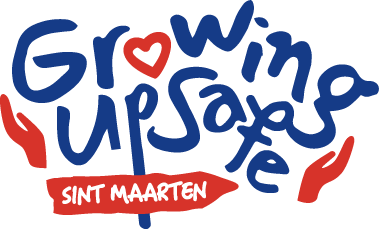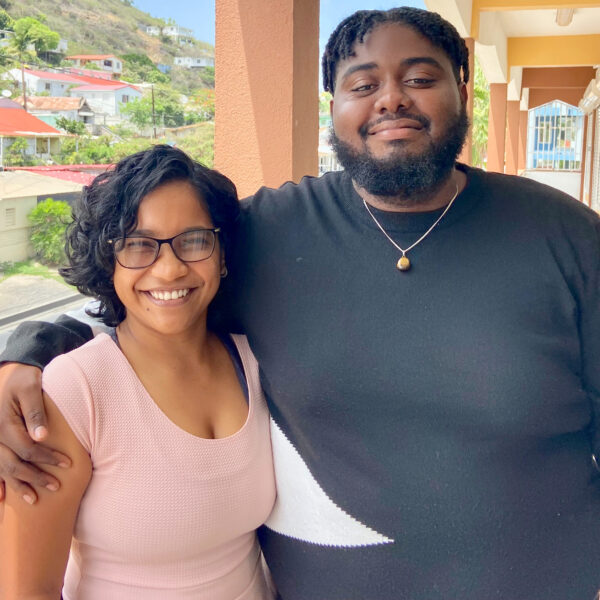How do you ensure that young people really have an influence on policy? The Flower of Participation gives insight.


Capacity strengthening
To be able to play an informed and effective role in programs and activities, young people should have the opportunity to grow their knowledge, skills and critical self-reflection. This can be done, for example, through training, workshops, internships or coaching or providing mentorship. The learning environment should be a safe space, where making mistakes is considered to be part of the process.

Inclusivity
Inclusivity should be integrated in all elements of meaningful youth participation. It is important that MYP is happening in an inclusive manner, to involve young people with diverse sexual orientations, gender identities and gender expressions, living with disabilities, and from different socio-economic backgrounds.

Enabling environment
An enabling environment consists of six factors: commitment from adults, policies, a safe space, financial means, youth friendliness and flexibility, Young people should be supported by adults to enable meaningful participation. They should be treated as equals and allowed to take up meaningful positions. They should be able to understand what is discussed and feel comfortable being involved.

Adult-led, shared decisions with youth
Adults are primarily in charge of the program, activity or organisation, but they include young people. It is the adults who have the final say. Young people are fully informed about the aims of the program or activity, and have a voice in the design, implementation, monitoring and evaluation. They enjoy certain decision-making power and responsibility.

Youth-led, shared decisions with adults
Young people oversee the program or activity, but they include adults who also have a say. This is often the case when young people lack expertise or experience, and ask adults to participate for learning purposes and to enhance the quality of the program, activity or organisation. Ultimately, young people are in charge, but they share decision-making power with adults.

Youth-adult partnership
Both young people and adults are equally involved and share power. They enjoy equal voice, and define the aims of the program or activity together. Decision-making power for young people is slightly less present than in a youth-led initiative, because they share it with adults. A YAP involves mutual learning, as adults can strengthen the capacity of young people and vice versa.

Youth-led, adults have no decision-making power
Young people are fully in charge. They enjoy the maximum level of decision-making power, information, voice and responsibility. Support may be limited, since young people are usually on their own. Sometimes, adults are consulted and invited for capacity strengthening. Youth-led organisations can usually be placed in this category.

Young people are consulted and informed
Young people are asked for their input and their opinion is considered. They are informed about the goals of the program or activity and what will be done with their input. Suggestions made by them are given thorough consideration. Yet, they don’t make the final decision as to whether their input is incorporated, they don’t enjoy any decision-making power on the design, implementation and evaluation.
Do young people have the opportunity to act independently within the program, activity or organisation that they participate in?

Young people are appointed a role and informed
Someone asks young people to do a task, and they can decide if they want to participate or not. Moreover, they are informed about the goals, about their role in it and why they have been invited to participate. They do not hold any decision-making power, and have a limited voice and responsibility. The freedom of choice, information, voice and responsibility can vary considerably.

Decoration
This happens when young people are used to help or ‘bolster’ a cause in a relatively indirect way, although adults do not pretend that the cause is inspired by young people.

Tokenism
Young people are invited to participate in a superficial manner because in reality, they don’t have a voice and their opinions are not listened to or respected. There is no space for them to participate on an equal footing, and they don’t carry any decision-making power or responsibility. Young people do enjoy some freedom of choice.

Manipulation
Young people are used as decoration, to make the cause seem more attractive. Participating young people are not in control of the activity, cannot give their opinion on the activity or the cause, and don’t enjoy any responsibility.

Information
Do young people have access to comprehensive information about the goals, different elements and timeline of the program, activity or organisation, and their role within it? Is there information about the different possibilities or opportunities that young people have in this regard?

Responsibility
Do young people have the opportunity to act independently within the rogram, activity or organisation that they participate in?

Voice
Can a young person voice his or her views and opinions, and to what extent do other people listen to and respect these views and opinions and integrate them into the program, activity or organisation?

Freedom of choice
Can a young person decide freely to participate, or not, in a program, activity or organisation?

Decision-making power
Can a young person make decisions about the program, activity or within the organisation?

Commitment from young people
Stronger and more present the core elements are, the more MYP can flourish.
Inspired by The Flower of Participation (www.choiceforyouth.org)
Watch the short video made by Choice for Youth here:



